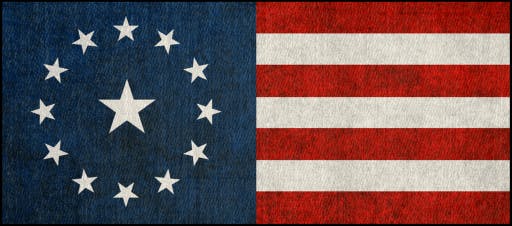THE STORY BEHIND THE MUSIC
In late 1896, Sousa and his wife took a much-deserved vacation to Europe. While there, Sousa received word that the manager of the Sousa Band, David Blakely, had died suddenly. The band was scheduled to begin another cross-country tour soon, and Sousa knew he must return to America at once to take over the band’s business affairs.
It is arguably the most famous march in the world and it’s certainly one of the best! It is recognized by the U.S. government as the official march of the United States (U.S. Code, Title 36, Section 304). It has original lyrics by Sousa and some other words you may have learned as a child that are definitely NOT by Sousa (“Be Kind To Your Web-Footed Friends”). With crashing cymbals, bombastic brass and chirping piccolos, “The Stars and Stripes Forever!” gets millions of people on their feet, clapping and cheering every year.

During the Gilded Age of the late 1800s and early 1900s, new innovations, milestones, and accomplishments in the United States instilled within its citizens patriotism and devotion to the American Dream. This feeling was epitomized through marches through the streets and the composition of songs and anthems.
One composer of this time period was John Philip Sousa. In 1896, Sousa composed “Stars and Stripes Forever”, a patriotic march anthem. As the founder and manager of the Sousa band, Sousa was on vacation in Europe when he received news that he must return to the United States to handle the band’s business and its upcoming tour.
According to his autobiography, Marching Along: Recollections of Men, Women and Music, Sousa “began to sense a rhythmic beat of a band playing within my brain. Throughout the whole tense voyage, that imaginary band continued to unfold the same themes, echoing and re-echoing the most distinct melody.” In his autobiography, Sousa also recalled that when he arrived back at America, he took down the composition he brainstormed on the journey from Europe.
As mentioned previously, the song was composed and performed in the late 1800s in the midst of the Gilded Age. There were many new advancements made by the Americans during this time. For instance, the new railroad was virtually complete, allowing travel from coast to coast. This led to the expansion onto the frontier and the west, which was the goal of “manifest destiny”, which was the American belief that the country was fated to claim all of the land on the continent and out west. Claiming all this land and driving out the Indians fulfilled this goal, which pleased the citizens.
In terms of economic and industrial development, advances such as the use of oil, the growth of new industries, and the building of new factories caused a large growth in population. Because of the industrial boom and the fall of agriculture and small family farms, individuals who moved out west to own farming land lost money greatly and had to move back to the Northeast and the northern areas of the Midwest to work in factories and live in urban areas. The desire to own land and make a living from farming on the Great Plains was crushed by the rise of big business and the creation of the gold standard, which also led to the death of silver currency. Monopolies between big businesses rose, such as John D. Rockefeller’s domination of the oil industry with his company, Standard Oil. Andrew Carnegie created the Carnegie Steel Company and used the Bessemer process to refine and make even more usable metal; this further drove the population growth of urban areas and cities and made possible the building of even larger structure, such as skyscrapers.
This combination of positive events and a new era is the reason why the song is a reflection of the American perspective during this time. According to Sousa, the song reflects the feeling he had when he returned to America, stating that “in a foreign country the sight of the Stars and Stripes seems the most glorious in the world."
The song was declared the official march of the United States of America in the late 1900s. The vocal accompaniment originally created by Sousa is very rarely found along with the instrumental. The song was covered with modified lyrics by Acoustix, a barbershop quartet from Texas. This version is the most commonly known version, and it is the version used in the music video.



